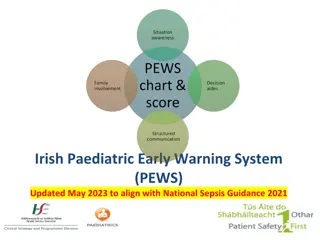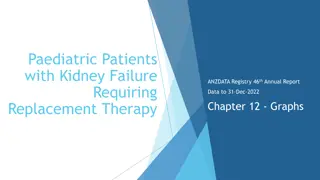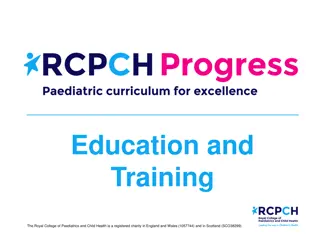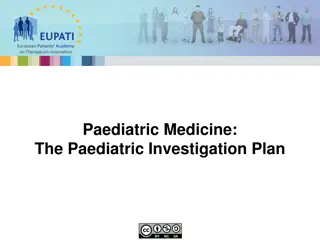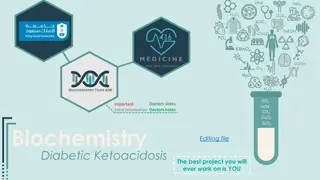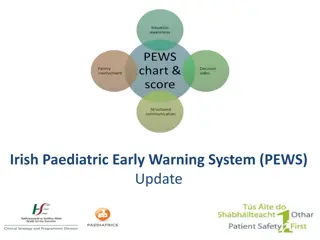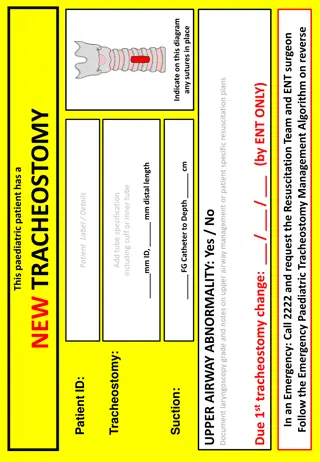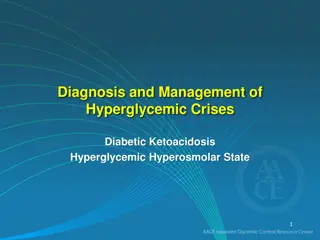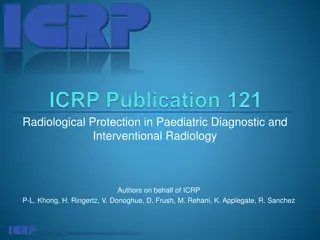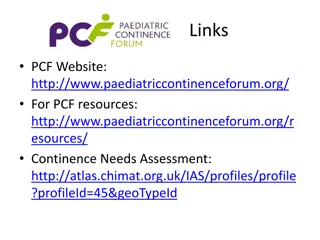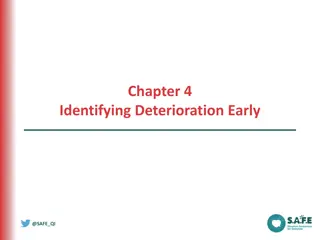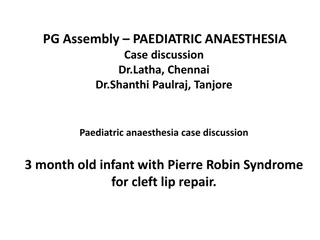Paediatric DKA Management Guidelines
This content covers the management approach for paediatric diabetic ketoacidosis (DKA) cases, including assessment, fluid resuscitation, insulin therapy, and escalated treatments for deteriorating conditions. Guidelines for assessing dehydration levels in DKA patients and appropriate interventions are provided.
Uploaded on Mar 10, 2025 | 0 Views
Download Presentation

Please find below an Image/Link to download the presentation.
The content on the website is provided AS IS for your information and personal use only. It may not be sold, licensed, or shared on other websites without obtaining consent from the author.If you encounter any issues during the download, it is possible that the publisher has removed the file from their server.
You are allowed to download the files provided on this website for personal or commercial use, subject to the condition that they are used lawfully. All files are the property of their respective owners.
The content on the website is provided AS IS for your information and personal use only. It may not be sold, licensed, or shared on other websites without obtaining consent from the author.
E N D
Presentation Transcript
Prescribing in Paediatric DKA JOSIE PHIZACKLEA ST5 EM
CASE 1 6yr child 20kg RR 35 other obs normal GCS =15 pH = 7.15 Glucose = 18 Ketones = 4 HCO3 =14 K = 3
CASE 1 6yr child 20kg Assessed as moderate DKA with pH 7.15 with 5% dehydration Received no saline boluses for resuscitation 41ml/hr saline 0.9% with KCL (20mmol in 500ml) Insulin 0.05 - 0.1 units/kg/hr started 1 hour after starting IV fluids
CASE 2 16 yr child 60kg RR 35, 100% OA, HR 140, 60/35, 36 degrees Sunken eyes, dry Thready pulse GCS = E3V4M6 pH = 6.9 Glucose = 24 HCO3 =11 Ketones = 6 K = 4.5
CASE 2 16 yr child 60kg Assessed as severe DKA pH 6.9, therefore 10% dehydration plus signs of circulatory collapse Received 3 x 10ml/kg 0.9% sodium chloride bolus Received 152.5ml/hr saline 0.9% with KCL (20mmol in 500ml) Insulin 0.05 - 0.1 units/kg/hr started 1 hour after starting IV fluids
Deteriorates GCS consistently falls to E1V2M4 HR falls to 40, BP rises to 160/100 PICU prepare for RSI Would you consider prescribing anything else?
Deteriorates Mannitol 20% 0.5g/kg (2.5mls/kg) over 10 15 mins OR Hypertonic Saline 2.7% 3mls/kg over 10 15 mins Half maintenance fluid rates and continue to escalate
Level of dehydration Assess & record level of dehydration Mild/Moderate 5% pH >7.1 dry mucous membranes reduced skin turgor Severe 10% pH <7.1 As above + sunken eyes SHOCKED Rapid thready pulse +/- hypotension.
Prescribing Do not routinely give a fluid bolus only if signs of shock Give a maximum of 10ml/kg bolus before senior input Give an absolute maximum of 30mls/kg The aim is to slowly correct metabolic abnormalities
Insulin Some evidence that cerebral oedema associated with early insulin Start soluble insulin at 0.05 - 0.1 units/kg/hr 1 hour after IV fluids start Aim to reduce the blood glucose no faster than 5mmols/hr. Once blood glucose <14mmol/l add 5% glucose to IV fluids If blood glucose falls to <4mmol/l give 2mls/kg 10% glucose increase glucose content of IV fluids to 10% Insulin infusion rate can be temporarily reduced (for 1hr)
TYPE OF FLUID 0.9% saline + 20mmol KCL per 500ml (once urine output confirmed) Once glucose is < 14mmol/l change to glucose containing fluid Calculated deficit replacement fluid must be completed If tolerating oral fluids IV rehydration rate is reduced accordingly Potassium replacement:
Troubleshooting If acidosis is not correcting, consider: Inadequate fluid resuscitation Insufficient insulin to switch off ketogenesis Hyperchloraemic acidosis (0.9& saline) If Cl is >80% of Na Base excess due to Cl = Na - Cl 32
Troubleshooting Avoid bicarbonate pH < 6.9 may improve cardiac contractility in severe shock but Provokes decrease in intracellular pH Provokes decrease in CSF pH Provokes increase in CSF lactate Decreases tissue oxygenation (modifies oxygen off-loading by haemoglobin) Accentuates hypokalaemia
Troubleshooting Use corrected sodium to assess adequacy of rehydration If Corrected Na RISING >5mmol/l in 4hr indicates too much fluid LOSS Increase fluid rate by 25% If corrected Na FALLING >5mmol/l in 4hr indicates too much fluid GAIN Decrease fluid rate by 25%
Troubleshooting Indication for intubation Ventilatory failure Loss of airway Decompensated shock
Summary Summary of updates NICE Guidance 2015 and BSPED 2015: Change in calculating degree of dehydration based on pH De-emphasise initial fluid bolus apart from the sickest children Max 10ml/kg fluid bolus without discussion with a senior Further reduction in maintenance fluid rates calculation No longer to subtract any boluses given up to 20 ml/kg Continuation of 0.9% sodium chloride (instead of changing to 0.45% sodium chloride) Option for IV insulin infusion rate of 0.05 Units/kg/hour OR 0.1 Units/kg/hour


